beginning
Following the influence of geology and paleontology in the early 19th century, evolutionary theories challenged the history of human origin discussed in sacred texts. By rendering humanity a natural product, rather than divine creation, evolutionists broke down the barrier between human spirituality and the "survival of the fittest" mentality. In this section, I will describe the beginnings of natural history in the 18th and 19th centuries, as a recognition of the history of the deep ages that was driven by paleontology and geology and that promotes the relationship between science, religion and human understanding.
New and old soil
Before the discovery of modern geology in 19 th century, the primary creationist belief was that the earth and the universe were relatively young — 10,000 XNUMX years or less, based on the creation story of Adam in the Bible. The view further regarded the earth as historically static; the only major event that changed the earth's surface was the flood of Noah, found in Genesis.
George Cuvier (1739-1862), a French geologist, was part of the first generation of geologists to study the structure of the earth. He made maps of layered rocks in France, and noticed that rock layers are very different types of rocks and many of these rocks contained ancient fossils. His research and investigations of these rocky layers suggested that the earth's surface has changed over generations and is more dynamic than previously thought. Cuvier found a layer of limestone - shells - that creates evidence for a much older earth than the biblical chronology described in Exodus.
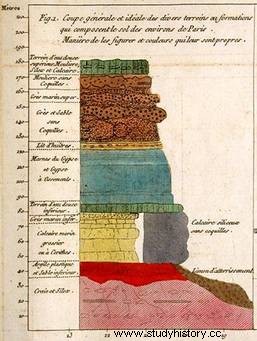
The idea of disaster was developed due to the new discoveries on the earth's surface. This theory believes that the earth's features are a result of past events that shaped the surface to what it is now. Dinosaur bones and newly discovered vertebrae were discovered in the 1840s around different parts of Europe and the globe. Elephant bones were excavated in the tropics, asking questions about the various fossils and their location in specific places on earth. The theme of extinction raised a theological problem:Since God created everything, God created that species of animal, so why should God make them disappear? The 1890s, however, confirmed that the extinction was real and Cuvier and his excavations created a new form of field studies, paleontology, the study of fossils.
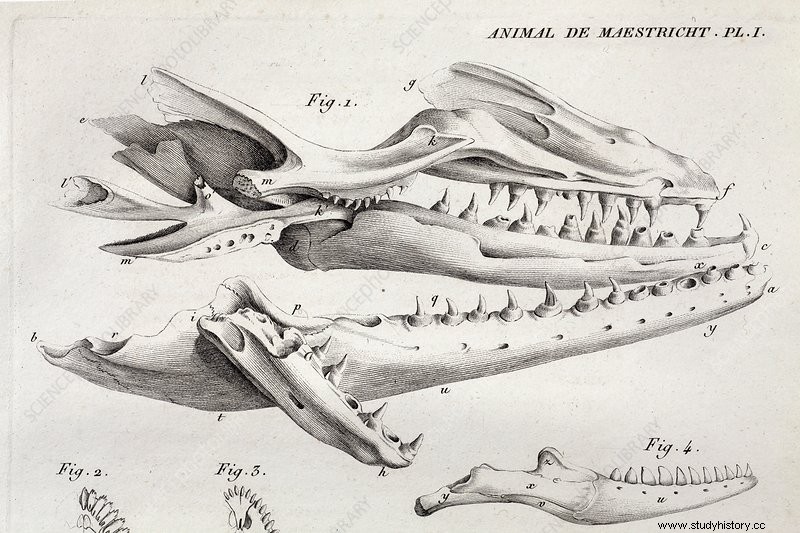
The present in the past
Charles Lyell, a British geologist, inspired by Cuvier's current claims, traveled through Europe to find more evidence of gradual change. He observed rock layers and found evidence of consistent rising and falling sea levels through layers of rock and sand. Lyell introduced the process of uniformitarianism. Uniformitarism draws that to understand the past, you can only use processes that can be observed change the earth today. Processes such as erosion, earthquakes and floods.
Thus, the changes in the earth's crust during geological history have resulted in continuous and uniform processes. From this theory, Lyell concluded that the earth must be incredibly old for these rock formations to occur. From his research, Lyell also saw the history of the earth as large and without direction. Lyell revolutionized a new geological history and created a powerful agenda to see the history of the earth through connections in the present and past.
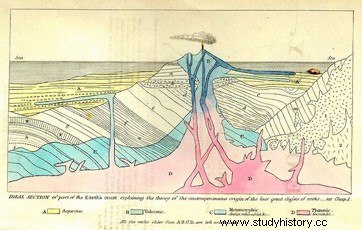
Genesis and Glaciers
Louis Agassiz was a Swiss biologist and geologist. Due to his location in Switzerland, he was able to see features of the earth that geologists in other parts of the world could not. He was particularly interested in glaciers, the slow movement of snow and ice. He saw ice masses move down the mountains and reshape the earth's surface. This new insight into ice patterns became a significant proof that these mounds, defined as moraines, affected the shape of the surface beneath them. In the 1830s, he saw evidence of large glaciers that would have covered large parts of Europe and North America, and was therefore the first to suggest the possibility of an Ice Age. Therefore, the animal gave fossils from the ice age that were discovered even more evidence that there were major climate changes and species were extinct because of this.
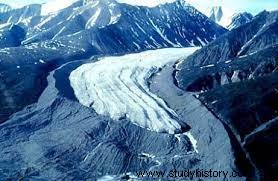
The discoveries and theories of this new historical geology announced that the history of the earth can be read through layers of rock. Geology became increasingly important because the evidence was impossible to reject and could be studied by anyone, anywhere. However, the Earth's history is still short and incomplete. However, these findings showed that the earth had many more secrets revealed about its ancient past. The clear evidence of a much older earth was almost impossible to refute. However, this theory was very threatening to the creation story in Exodus. If the earth was far older than expected, how could the earth still have been created in a seven-day period? Thus, with new geological evidence, there had to be a way to reconcile seven-day creation, Old Testament ideas, and Old Earth finds.
Geology in the Defense of God
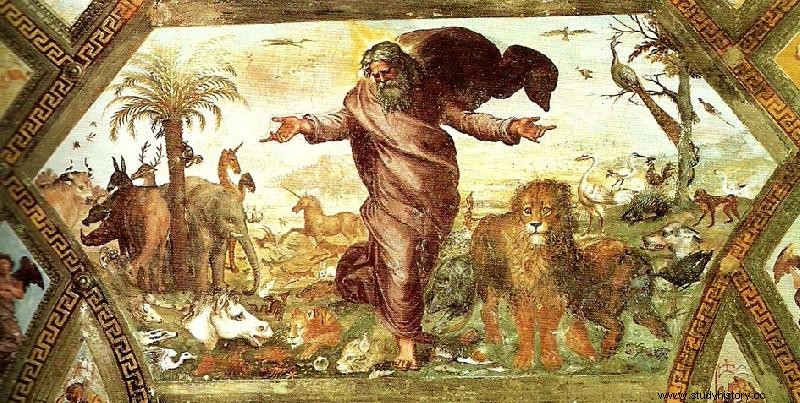
Towards the end of 18 th century, most of the public was aware of geology as a new field of study and thought. For most Christians, geology was not a major issue. A majority of Christians accepted theories such as Gap Theory or Theory of Aging which were put forward by believers who still accepted XNUMX. Deuteronomy, but also accepted these new geological implications.
Gap theory
Thomas Chalmers, a 19th century Scotland minister, developed Gap Theory, which states that the days of creation are literally 24-hour days, but between the first verse where God creates the earth, there is a gap between then and when God creates what is in and live on earth. He pointed out that the Bible is not a geology-oriented text and therefore does not need to describe the earth's long history. In relation to the dinosaurs and the ice age, he suggested that they are not relevant to human history, so that is why they are not mentioned in the Bible.
Another prominent proponent of the Gap Theory was Edward Hitchcock, and an American geologist and evangelical Christian who advocated the gap theory. He published the Scofield Reference Bible in 1870. This was a standard Bible with footnotes in XNUMX. Deuteronomy about what geologists say and advocate for Gap Theory, claiming this way geology challenges Genesis, but does not cause a problem.
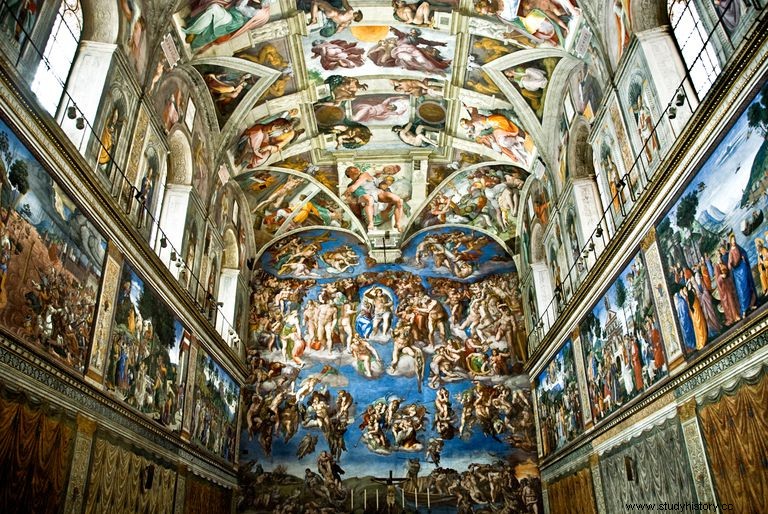
Theory of age
Hugh Miller, a geologist and evangelical Christian, also suggested an alternative way of addressing modern geology in scripture. He claimed that the days of creation in Deuteronomy are not XNUMX-hour days, but rather represent large geological time periods. This was called The Age Age theory. He saw that in the descriptions of the days of creation there were more sophisticated animals in later days and humans were created later. The Bible therefore generally gives us an accurate description of creation.
The written geologist
A third group that accepted both geological evidence and Genesis called themselves Biblical Geologists. This group were not really geologists, but believed that the Bible says what it says and means what it says. This group interpreted the scripture with the least creativity and claimed that the whole XNUMX. Exodus is true and correct. They continued to believe that the earth is not old. Their answer as to why it was a rock layer was that God made fossils and rock layers to make the earth look older than it actually was. However, this raises a separate theological problem:Why should God try to deceive people in that way? Is he a deceptive God? Their answer was that God is not really a deceiver, but has a plan we do not understand.
The religious resistance
The Seven Day Adventist
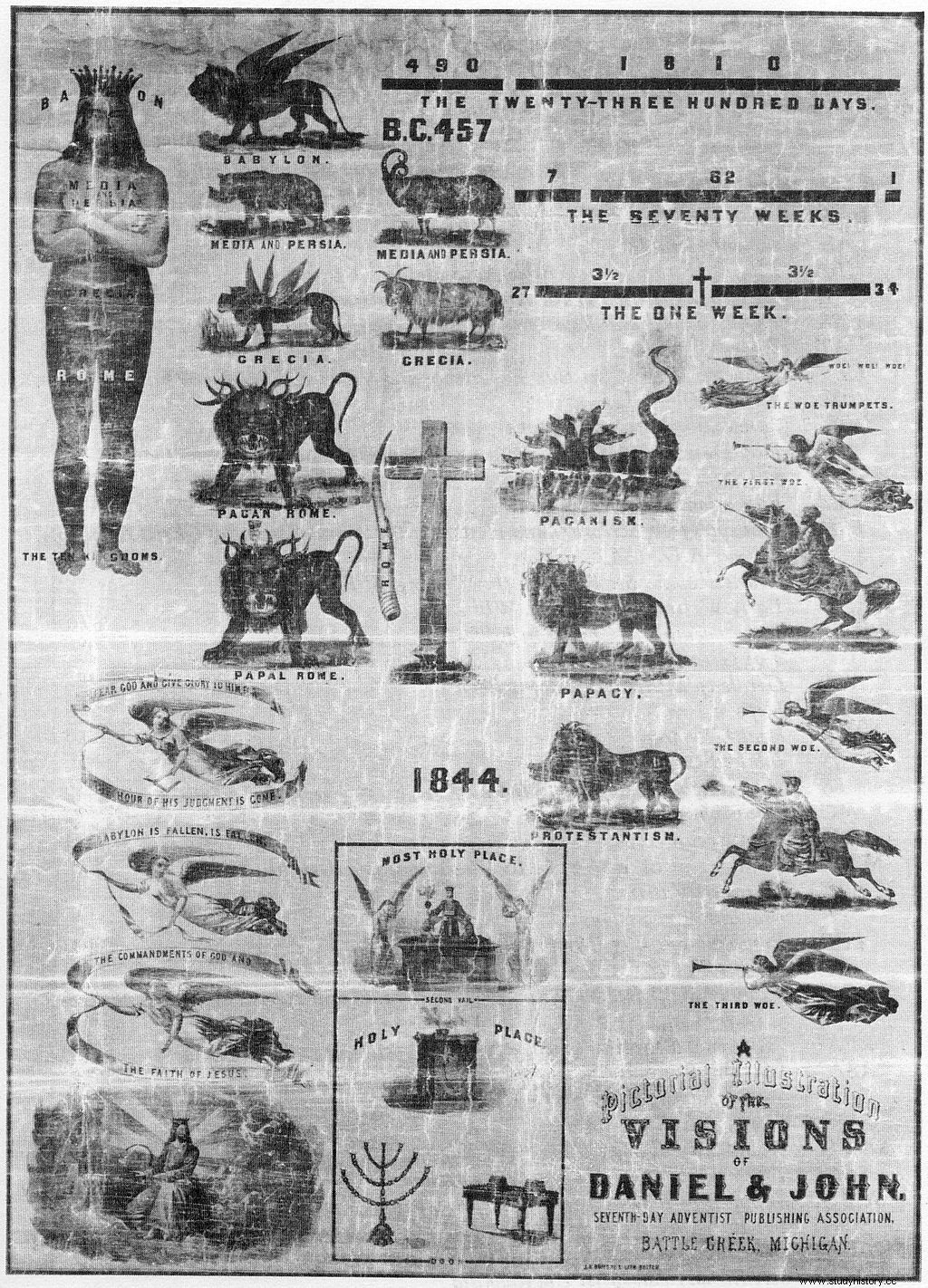
New discoveries of modern geology created alternative views of evolution and rejected nature as sacred. Human behavior changed, and the idea of what it means to be a human being arose. Modern theories about humans and their position on earth have changed into ideas such as humans that could potentially be biologically linked to religion and that evolution itself gave faith to God. End of 19 th century was a time of religious unrest. People lost faith in traditional religion. The Seven Day Adventists was created when a woman named Ellen White sustained a head injury and began seeing visions. She claimed that she saw the creation of the world by God, and that these days were 24-hour days. This vision, she says, showed that there was no big gap, and that Genesis had to be taken literally.
The New Geology textbook was published in 1923 by Price, to convince the public to look at the Bible literally again. The book came with two major claims. The earth is young and the biblical flood provides all the evidence needed to believe in a young earth. Price was the beginning of the great setback religious groups had against geology and other great scientific discoveries and theories at that time. There was a need for alternative science for those who did not want to accept the new geological evidence on an ancient earth. Price created the Deluge Geology Society which supported the biblical flood and the young earth, but collapsed due to debates in the group about how old the solar system is. This is a great example of how opposing mainstream science, in an attempt to resolve a conflict, raises separate conflicts by itself.
The Intelligent Designer
In addition to groups created specifically to address the age of the earth, the alternative science theory of Intelligent Designer was created. This says that the design of the earth could only have happened through an intelligent design. The belief was that not everything could be purely natural and was related to the theory of chance. This alternative theory states that the cause of the big bang could not be natural, and that the origin of life cannot be due to natural causes. For example, they also argue that DNA is so complex that it can not just be the result of a random chemical reaction. In addition, this group of proponents believes that the origin of consciousness cannot come from nature, because the human mind is so complex that it could not have evolved in the natural evolutionary process. This theory avoided the use of the word God. They accepted the discoveries of modern geology, but this was a last chance to find a way to defend the role of God in the universe. As all the new sciences became much more complex, this was a way to ensure that people still believed there was a need and use for God.
The Evidence of Human Evolution
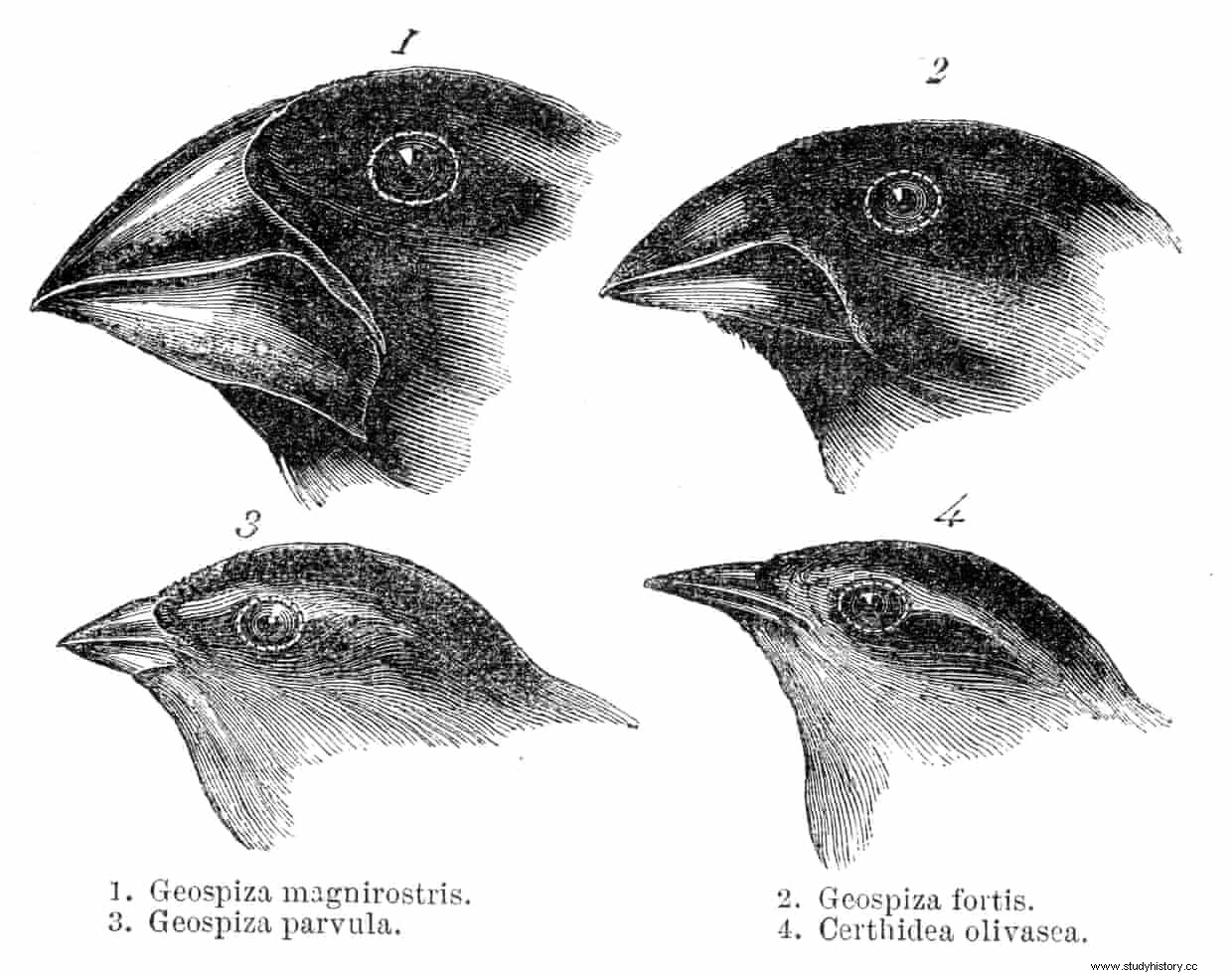
Charles Darwin and naturalism
In the nineteenth century, the English naturalists Charles Darwin (1809-82) reimagined the living world in the image of a competitive, industrial Britain. He left the Bible as scientific authority and explained the origin of living things by divinely established laws of nature. Charles Darwin studied and dropped out of the medical program at Edinburgh University. Led by his father, Darwin then studied at Cambridge University to train for the Church of England. When he decided that there was nothing in them he could say he believed, Darwin shifted his focus again to a study that would change lives as we knew it; geology. In 1828, Darwin studied under John Stevens Henslow and Adam Sedgewick; both radical geologists and thinkers. His growing fascination and studies with Sedgewick gave Darwin a position aboard the HSE Beagle , a geological research expedition in the Galapagos Islands.
Darwin's infamous research on the Galapagos provided evidence of an evolutionary evolutionary process of which the human species was a part. In the Galapagos, Darwin found evidence that new species were produced when populations were separated in isolated places and subjected to new conditions. Under these circumstances, several different species can be produced from an original form. Darwin theorized that the theory of natural selection could explain how separate populations can change to their new environments. Thus, the formation of different populations is mainly "random" based on location and the result of a "struggle for existence" among all species.
Evolutionary theory
Theory of evolution has always been seen as an important area where science and religion interact because of its influence on our ideas about the origin of the world. It also affects the human mind because of its effects on our faith in God and his interaction with his creation. In the early nineteenth century, evolutionary theories were inspired and informed by the effects of geology and paleontology, and challenged the history of human origin described by sacred texts.
The Darwinian theory of evolution was less romantic than the traditional history of human creation, and created a controversial question. The traditional view is still that humans are divinely created and humans were created as such. The theory of natural selection states that struggle and suffering are important driving forces for natural development and the root cause of our own origins. Natural selection, like geology, suggests that the earth and what lives on it have a long and complex evolutionary history. Darwin's studies advanced the position of geologists by exploring the age of the earth through species and their evolution.
The Impact of Natural History
Natural history has forever been intertwined in intricate ways with the theological and philosophical assumptions about the different cultures and periods in which it developed. The interpretation has been strongly influenced by the gradual transformation of the classical and early Christian view of nature into the modern conception of a dynamic and evolving world. The scientific development of geologists, paleontologists, archaeologists and anthropologists in the 18th and 19th centuries reimagined the relationship between writing and science. The development of sophistication in the understanding of our ecological system gradually reinforced a natural theoretical independence from Christianity. Natural history was developed to include everything from the study of biology to geology to the anthropological development of culture and the human condition to adapt.
